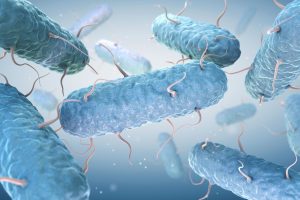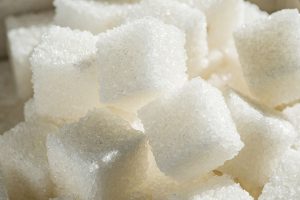We’ve all heard it endlessly as kids. Don’t eat too much sugar, it’s bad for you. However, what if I told you that sugars aren’t all that bad and in fact, careful changes to its chemistry can lead to life-saving drugs, such as antibiotics! Just last year, researchers at the University of British Columbia, led by Stephen Withers, found a unique way to tinker with sugars’ chemical structures by using molecules in bacteria. The same bacteria found in our poop!

A view of E. Coli, the bacteria that was used by Wither’s and his team. Credits: The Philadelphia Inquirer
SWEET…BUT WHAT ARE THEY?
Before we go further, let’s start with a simple question: What exactly are sugars? Sugars are molecules shaped like hexagons which are often joined to other molecules known as “acceptors”. In a way we are kind of like sugars; we find someone we like, confess how we feel, and they accept our love! Right? Wrong. As we all know the last part rarely happens and this is the same in sugars, as chemists have yet to find easy ways to join the sugar and acceptors. Luckily for sugars (and unluckily for us), Mother Nature has come up with some solutions, using helper molecules known as enzymes.

Curious as to what type of sugars chemists work with? There’s no ambiguity here, chemists use the same molecules found in sugar cubes. Yes! The ones you put in your coffee. Credits: The Verge
A SOLUTION UNDER OUR NOSES…
Instead of struggling to find ways of joining sugars and acceptors, Wither’s team thought: Why not just use these enzymes? In other words, hijack Mother Nature. To make their idea a reality, they extracted sugar-specific enzymes from E. Coli, a bacterium that lives inside the human digestive tract. Their efforts gave them 175 sugar-specific enzymes, and from this they chose 8 enzymes that were most specific to the type of sugars and acceptors they were interested in.
“With the 8 enzymes in hand, Withers and his team could now easily make these sugar-acceptor linkages” is what I would like to report; however, things are never so simple. It turns out that the sugar-specific enzymes they got from E. Coli did the exact opposite of what they wanted. Instead of forming sugar-acceptor linkages, they were specialized in breaking them.
Unsurprisingly the savvy researchers expected this and already had a reliable strategy to reverse-engineer these enzymes from linkage breakers to linkage makers. You may be wondering how they re-purposed something to work completely opposite of what it was intended for. To reconcile this, think of this example: hammers. If you’re feeling angry one day you would likely use the hammer to smash things. However, if you’re feeling innovative one day, the hammer would help you build things by hammering in nails. These enzymes are similar; an enzyme that breaks sugar bonds differs very little from one that builds sugar bonds.
MORE THAN JUST A BOND…
Sugars go way beyond than just satisfying your sugar fix. They are molecules essential to the maintenance and regulation of not only your body, but in most living things! Because they are found everywhere, including infectious bacteria, sugar-based molecules serve as effective antibiotics, however making these drugs are difficult. Why? Well as mentioned before, chemists have trouble making these sugar-acceptor bonds; however, the research done by Wither’s team show that this will not remain the case. On a lighter note, they also created a sugar-based molecule that had nothing to do with health; detergent. This just further shows that these bonds are far-reaching and relevant in many contexts.
Story source
Armstrong, Z.; Liu, F.; Chen, H.-M.; Hallam, S. J.; Withers, S. G. Systematic Screening of Synthetic Gene-Encoded Enzymes for Synthesis of Modified Glycosides. ACS Catalysis 2019, 9 (4), 3219–3227.
